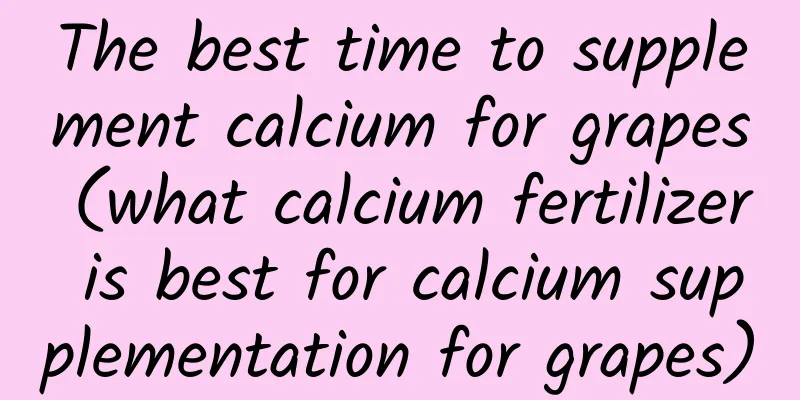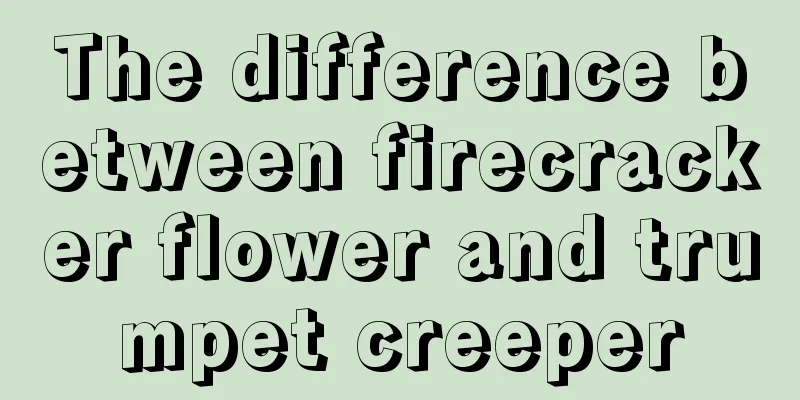The best time to supplement calcium for grapes (what calcium fertilizer is best for calcium supplementation for grapes)

When is the best time to take calcium from grapes?Calcium is one of the essential nutrients for crop growth and plays an extremely important role in the growth and development of crops. Calcium generally exists in the cell walls of crops in the form of calcium pectate, which increases the toughness of the cell walls, prevents the peel from cracking, and resists the invasion of various diseases. Calcium is particularly important in the bodies of fruit crops, especially in berry crops such as grapes. In some periods, the need for calcium fertilizer by grapes far exceeds the demand for nitrogen fertilizer . At the same time, calcium fertilizer has a good promoting effect on root growth, and at the same time enhances the crops' drought resistance, cold resistance, and stress resistance . Generally, 1000kg of fresh grapes require about 10kg of pure calcium . During the entire growth period of grapes, from budding to leafing, flowering, fruiting, swelling, and coloring, organic fertilizers are needed. The symptoms caused by deficiency of trace elements such as calcium fertilizer is an irreversible process, which means that once adverse symptoms occur due to calcium deficiency, supplementing calcium fertilizer will be of no help. Therefore, calcium fertilizer should be supplemented in advance during the entire grape production process. Calcium fertilizer is generally not easy to move in the soil, and it is easy to produce antagonism with other elements, such as nitrogen, phosphorus, and magnesium. According to these characteristics, calcium fertilizer can generally be supplemented in three times . Once before budding , once after flowering , and once before fruit expansion, these three calcium supplements can basically meet the grape's demand for calcium fertilizer during the peak period. Calcium fertilizer is generally applied as a base fertilizer, supplemented by foliar spraying. In order to improve fruit quality and reduce fruit cracking, calcium supplementation should be done after flowering, usually two weeks after flowering. The point that everyone is most familiar with is the anti-cracking function of calcium fertilizer. Regarding grape crack prevention, a large amount of experimental data shows that sufficient calcium fertilizer can play a good preventive effect. A more important point is water management. Most fruit cracking occurs when there is heavy watering after a drought, or when there is sudden heavy rainfall after a drought. Fruit cracking is mainly a matter of water management. Good drainage should be done and the humidity of the vineyard environment should be controlled. The humidity during the fruit-bearing period is generally controlled at 20%, which is most suitable for the healthy growth of grapes and prevents fruit cracking. What calcium fertilizer should be used to supplement calcium for grapesSince timely calcium supplementation can make the grape fruit high in sugar content, plump in appearance, with bright color and glossy surface. Now that it is June, most varieties of grapes are in the young fruit stage - fruit swelling stage, and some fruits have entered the coloring stage. This is a critical period for the formation of yield and quality, and also a critical period for calcium supplementation. There are many types of calcium fertilizers on the market, and fruit farmers always don't know which one to choose when supplementing calcium for grapes. Plants absorb different forms of calcium differently, so different forms of calcium have different effects on calcium supplementation. Today we compare two common calcium fertilizers, one is inorganic calcium, calcium nitrate ; the other is organic chelated calcium and clean water. During the young fruit expansion period and 2 weeks before harvest , they are sprayed on leaves and fruit clusters to see the effect of calcium supplementation, so that everyone can make a better choice. 1. Effect of calcium spraying on calcium content in grape fruit Spraying chelated calcium and calcium nitrate can increase the calcium content in the fruit. However, chelated calcium should be sprayed during the young fruit expansion period. The calcium content in the pulp was highest at harvest, three times that of the control, 54.3% higher than spraying calcium nitrate on the ears at the same time, and 41.6% higher than spraying the same calcium source 2 weeks before harvest, which is better than spraying calcium on the leaves. This means that spraying calcium on fruit clusters has a great impact on the calcium content of the peel and pulp, and the effect of spraying chelated calcium is better than calcium nitrate, and the effect of spraying during the expansion period is better than 2 weeks before harvest . 2. Effect of calcium spraying on pectin content in grape fruit In plant cell walls, calcium combines with pectin in the gelatinous layer of the cell wall to form calcium pectin. Calcium pectate plays the role of bonding plant cell wall substances, affecting the rigidity of the cell wall and maintaining the hardness of the fruit. Exogenous calcium supplementation in fruits mainly increases the content of calcium pectate. The calcium content in the pulp is extremely significantly positively correlated with the fruit hardness and with the content of protopectin in the pulp. This shows that calcium spraying increases the calcium content of the fruit, increases the original pectin content in the pulp, and also increases the hardness of the fruit, which helps to improve the storage and transportation quality of the fruit. These three are closely related. After calcium spraying, the total pectin, protopectin and water-soluble pectin content of Red Globe grapes increased significantly. Whether in the young fruit stage to the swelling stage or before harvest, spraying calcium sugar alcohol is more conducive to the increase of total pectin content than spraying calcium nitrate. In addition, for grapes that have entered the coloring period, the use of nitrogen fertilizers needs to be reduced to avoid greening due to excessive use of nitrogen fertilizers. It is advisable to use less calcium nitrate. |
Recommend
Cultivation methods and precautions of bean green potted plants
Peperomia has a small plant shape and thick green...
How to identify jasmine
1.Tree trunk It is an evergreen shrub with weak f...
The cultivation and precautions of the seeds of fortune
The fortune seed, also known as cinnabar root, re...
How to prevent and cure cyclamen curling and yellowing
Leaves curl and turn yellow Solution: Lack of nut...
When do strawberries bloom?
1. When does it bloom? Strawberry is a common fru...
How to save kiwi seeds
Kiwifruit seeds When the kiwi fruit is ripe, it c...
How to grow green radish more vigorously using hydroponics? Three tips to make it bloom
Green ivy is a plant that is often grown in house...
Potted Peony Cultivation and Maintenance
1. Cultivation Methods 1. Planting: Prepare clean...
Can honeysuckle be grown indoors?
Can honeysuckle be grown indoors? It is not recom...
How to make Oxalis germinate and how to plant bulbs
1. How to make Oxalis germinate If you want to ma...
What fertilizer is good for smooth sailing?
What fertilizer to apply for smooth sailing Gener...
How to prune peony
When to prune peonies It is generally more approp...
Want to have a pot full of flowers in autumn and winter? Then grow these "3 types", they will bloom even in cold weather!
As we all know, many flowers cannot grow in winte...
What fertilizer content is best for growing peanuts to achieve high yields (what fertilizer is needed for growing peanuts)
What fertilizer is best for peanuts? Peanuts are ...
Figs are placed in a vase, and one fig tree is filled with 5 kilograms of fruits, which cannot be eaten up in 3 months!
If you propagate figs by cuttings like this, one ...









